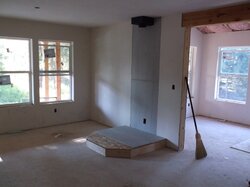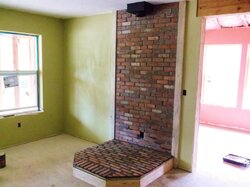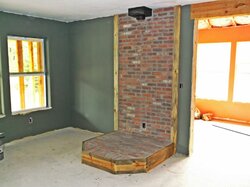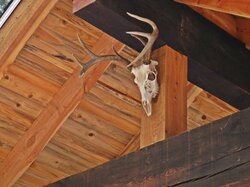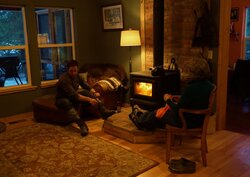Hope you all can see the photo below. Currently building a stove pad and backwall, got a concern;
The metal lathe on the backwall is 4 ft. wide, however the studs are not centered behind the lathe, so I am only hitting 3 studs, plus the double top plate. One stud in the very middle, and 16'' to right and left.
My worry is that the lathe to the right and left of the outer studs overhang by 6" on the left side, and 9" or so on the right, and is only secured to the top plate and with screws threw the drywall (to keep the lathe flat, not structural at all).
Planning on mortaring this weekend and laying brick veneer. Should I be concerned about the lathe becoming saggy or flopping, cracking the masonry work? Any advice?
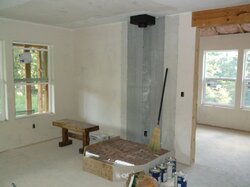
The metal lathe on the backwall is 4 ft. wide, however the studs are not centered behind the lathe, so I am only hitting 3 studs, plus the double top plate. One stud in the very middle, and 16'' to right and left.
My worry is that the lathe to the right and left of the outer studs overhang by 6" on the left side, and 9" or so on the right, and is only secured to the top plate and with screws threw the drywall (to keep the lathe flat, not structural at all).
Planning on mortaring this weekend and laying brick veneer. Should I be concerned about the lathe becoming saggy or flopping, cracking the masonry work? Any advice?



